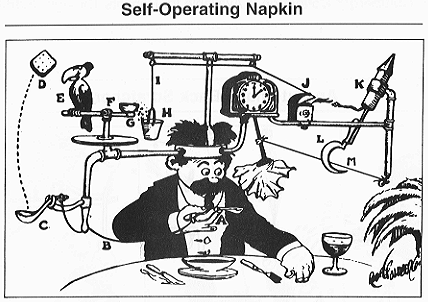Party Popper
Event Location: Cocoa-FL
Competition: Energy Transfer Machine
Division: 6-8
School: Orlando Science Schools
Team Size: 2

We (Ajay & Ben) created the party popper, which utilizes electrical, chemical, sound, mechanical, potential, and kinetic energy.
The first energy transfer is where stored chemical energy in the two AA batteries (3v) is converted into electrical energy.
In the second energy transfer, the electrical energy from the two AA batteries powers a snap circuit system that turns on a fan, transferring electrical energy into mechanical energy. The fan is attached to a string and the string is tied to a credit card holding up a ball bearing. When the fan spins, it pulls on the string making the credit card fall, converting mechanical energy into kinetic energy for the third energy transfer.
As the ball bearing is inside the cup with a hole at the bottom, the ball bearing falls down and falls into a long shaft, converting mechanical energy and potential energy into kinetic energy for the 4th transfer of energy.
For the 5th energy transfer, the end of the shaft has a small peg that pops the ball bearing into an elbow connector where another ball bearing is kept, loosely supported by an aluminum foil barrier. When the first ball bearing hits it, it transfers its potential & kinetic energy to the second ball bearing as kinetic energy.
In the 6th energy transfer, the second ball bearing goes down another shaft, pops out of an angle connector into a large cup with hole, and hits another marble on the lip of the cup, transferring its potential & kinetic energy to the third ball bearing as kinetic energy.
The third ball bearing drops through the hole and travels down into a marble run funnel. The bearing continues in the marble run until it hits a set of dominoes, marking the 7th energy transfer potential & kinetic energy from the ball bearing to the domino as kinetic energy.
The 8th energy transfer happens when the end of the domino chain hits a chain of heavy pool tiles and the kinetic energy is transferred to the pool tiles.
The 9th energy transfer occurs when the last pool tile block hits the meter stick with a needle, which converts its potential energy and kinetic energy into rotational kinetic energy.
The needle pokes the balloon once it falls in the 10th energy transfer, where kinetic energy and potential energy is transformed into kinetic energy and sound energy.

Fantastic examples of energy transfer used in your system. And nicely detailed explanations of each. Congratulations on your energy transfer system. And you popped the balloon!
This is amazing! I know a lot of work went into creating and designing this device. Great job to both of you and I am so proud of the work you did!
Great job Ajay and Ben! It is a fun idea~ it’s good that you understand all those energy transformations. Will you have a poster to explain your ideas when presenting this weekend? Good luck and have fun!
Truly amazing! I’m very proud watching this come together.
Ajay and Ben – really fun idea. Your creativity is inspiring and the execution was flawless. Great job!! Can’t wait to see your next project!!
Amazing work! You should both be very proud of what you accomplished with your energy transfer machine. I can’t wait to see what’s next. We need creative thinkers in this world to solve the challenges we face had human beings. I have faith in you guys to be on the cutting edge of the future leading the way through creative innovation., Again, really awesome work.
Awesome! Loved your use of all the different items to transfer energy – you have inspired me to go build my own energy transfer machine … am sure you have made it look easier than it is! Well done!
Great Poppin’ experiment !
Such a great way to describe the transfer of energy. Impressive effort by these young minds to explain such important energy concepts in relatable terms .. kudos !
What a cool and complex idea, it must have taken a lot of effort to get it to work correctly! What did you learn from building this that will inform what you design and build next?
From looking at this machine, it goes so fast and some may think that it was an easy and quick set up. I know that a lot of work went into this machine and you are able to explain the scientific concepts behind it. I have used the Snap Circuits to create art work before but never as part of an Energy Transfer Machine. This is a great idea! You both should be very proud of the hard work you put into working on this project.
Awesome work incorporating so many details! Your explanations are very clear and easy to understand. I am proud of your hard work!
Excellent work Ajay and Ben! Very creative and you did wonderful job explaining all the different types of energy that your machine utilizes.
This looks like it took you a lot of time and thought. Your intelligence shines through this project, good job!
Good work showing close ups of the machine as you were explaining it. It looked like a very sturdy setup. I would like to know what step was the hardest to get right, and what did you do to make it work?
Ajay and Ben, I like the cooperation and effort the two of you put into the Party popper. The name itself grabbed my attention! Thank you for breaking down the process and explaining the various transfers of energy. I did like Nick’s question also about what was the hardest step to get right? I can tell that a lot of dedication went into this.